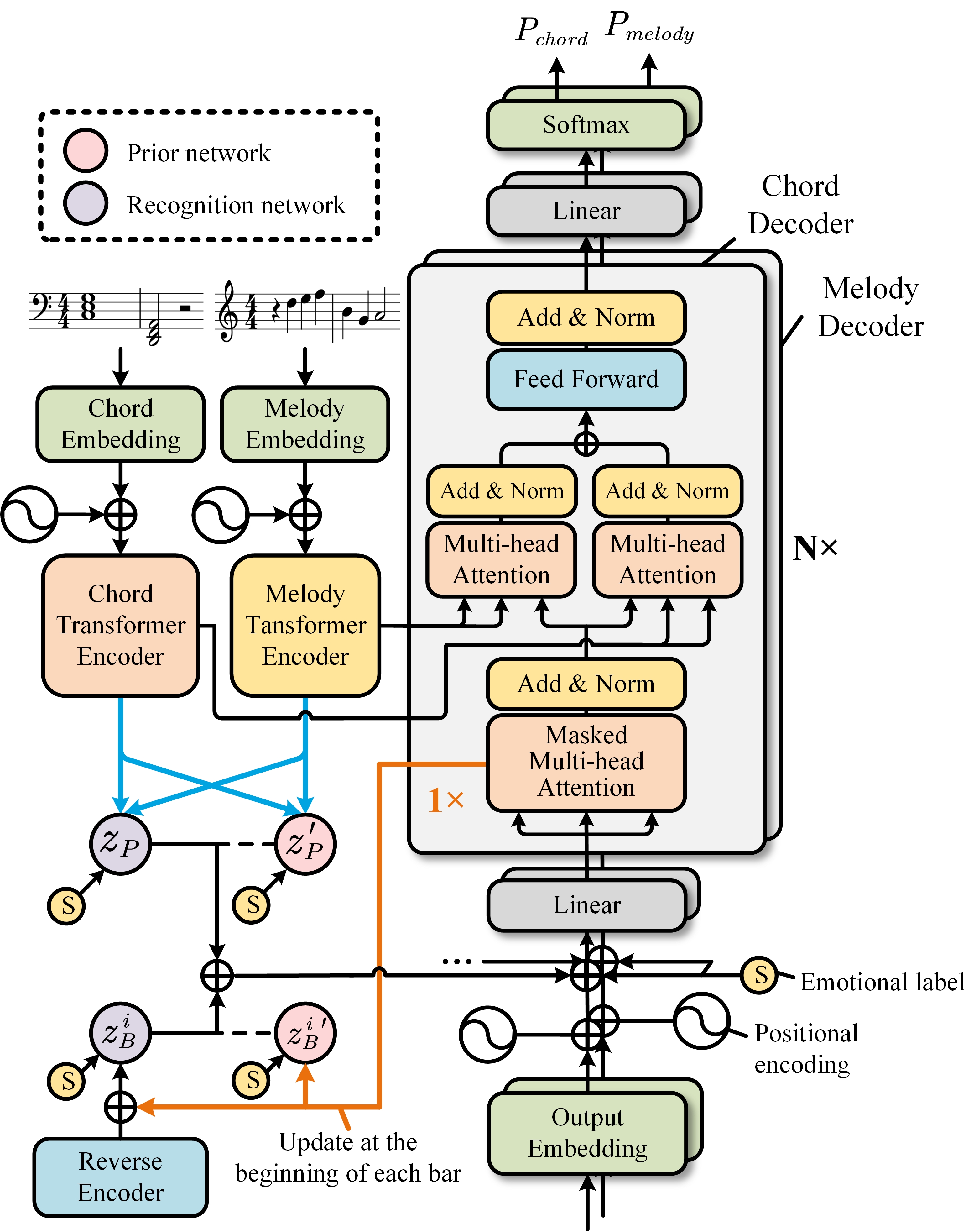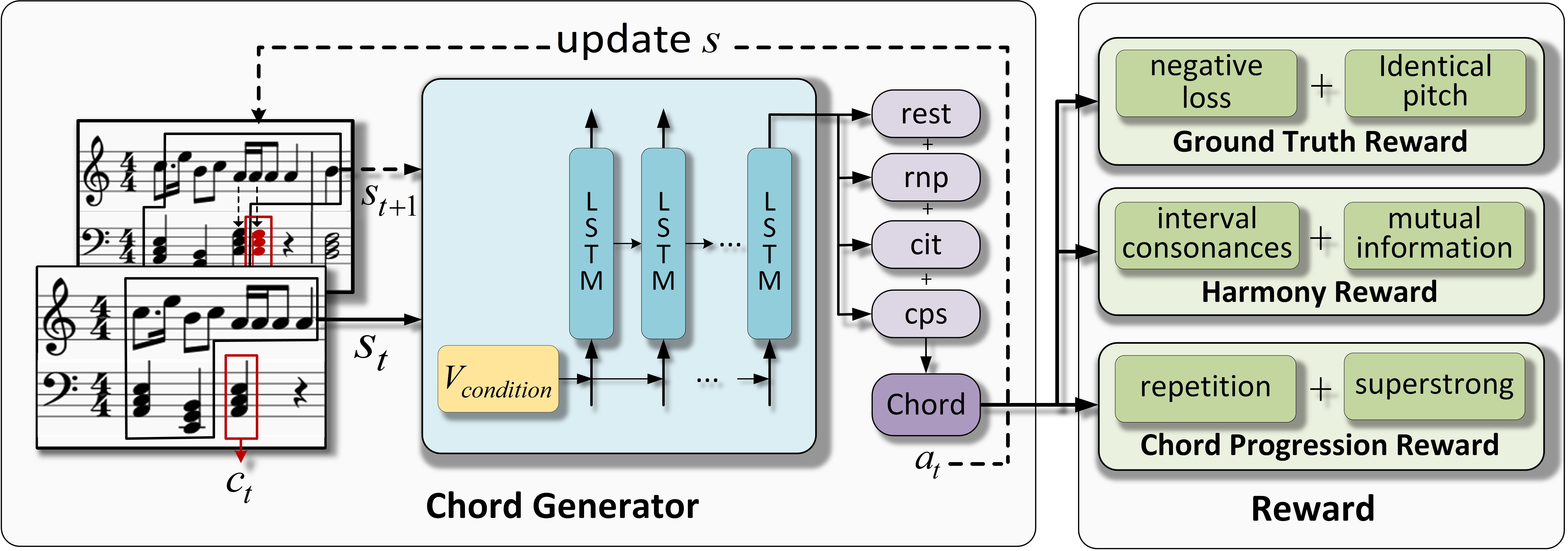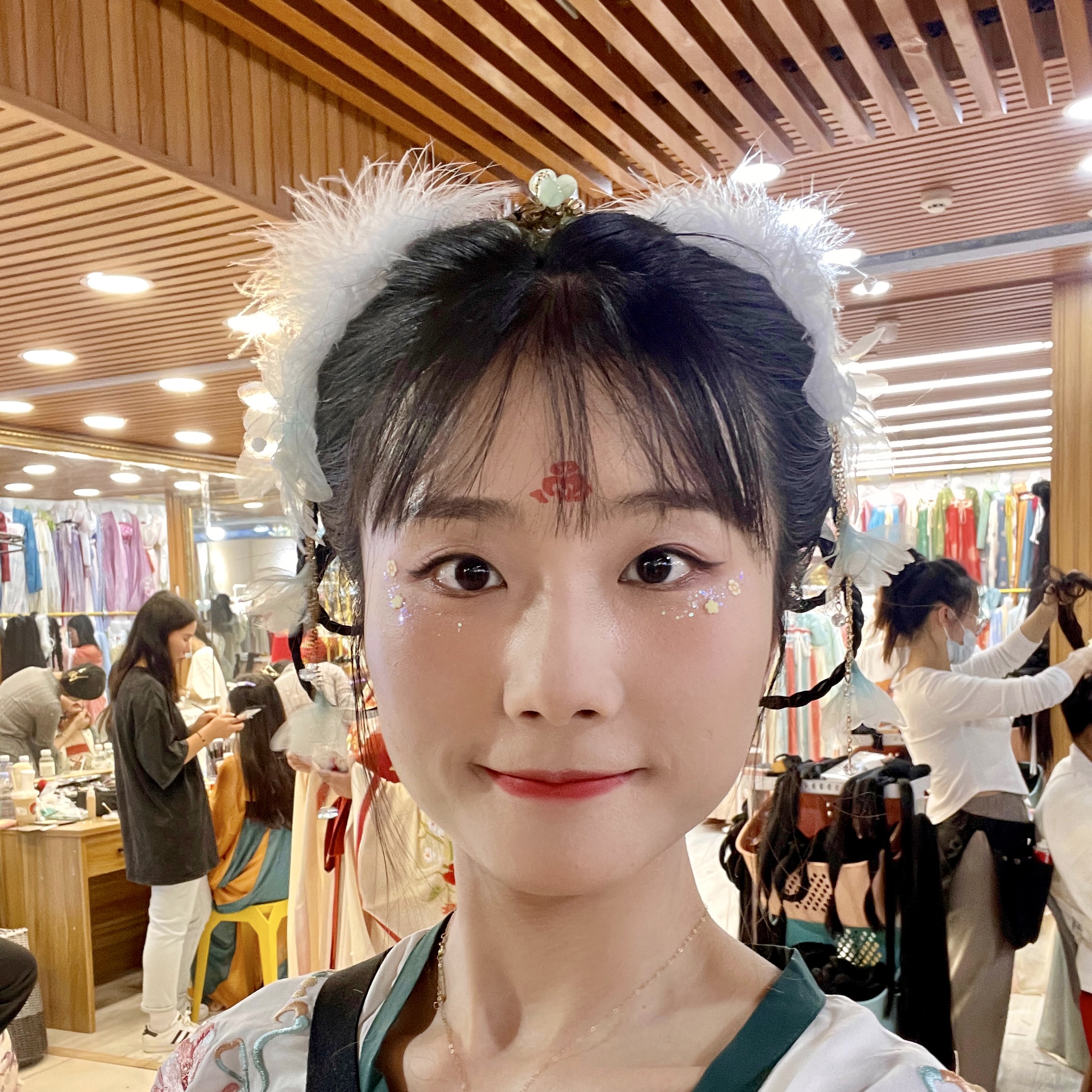Demos
2023
A Survey on Deep Learning for Symbolic Music Generation: Representations, Algorithms, Evaluations, and Challenges

- This paper attempts to provide a task-oriented survey of symbolic music generation based on deep learning techniques, covering most of the currently popular music generation tasks. The distinct models under the same task are set forth briefly and strung according to their motivations, basically in chronological order.
- Accepted by the ACM Computing Surveys.
- Paper link

- MusER is a novel VQ-VAE-based model for generating symbolic music with emotion, which employs musical element-based regularization in the latent space to disentangle distinct musical elements, investigate their roles in distinguishing emotions, and further manipulate elements to alter musical emotions.
- Accepted by the AAAI 2024.
- Paper link | code repository | demo page

- EmoMusicTV is a transformer-based VAE that contains a hierarchical latent variable structure to model holistic properties of the music segments and short-term variations within bars. The piece- and bar-level emotional labels are embedded in their corresponding latent spaces to guide music generation. EmoMusicTV can adapt to multiple music generation tasks and performs well, e.g., melody harmonization, melody generation given harmony, and lead sheet generation.
- Accepted by the IEEE Transactions on Multimedia (TMM).
- Paper link | code repository | demo page

- RL-Chord is a novel melody harmonization system based on reinforcement learning (RL), which involves a newly designed chord representation, an improved conditional LSTM (CLSTM) model, and three well-designed reward modules. With the help of a pretrained style classifier, RL-Chord can also realize the unsupervised chord generation in Chinese folk style.
- Accepted by the IEEE Transactions on Neural Networks and Learning Systems (TNNLS).
- Paper link | code repository | demo page

- paper
To be added.
